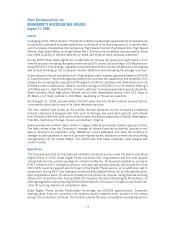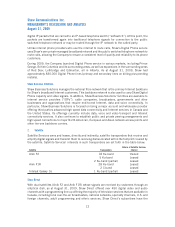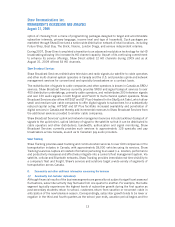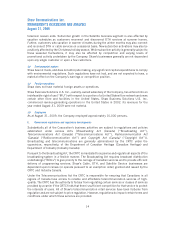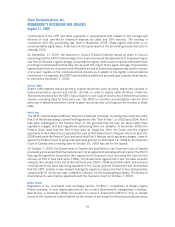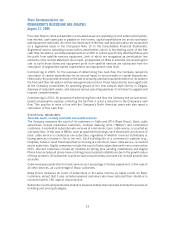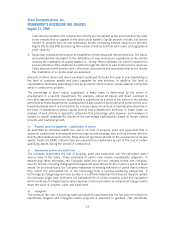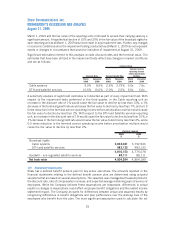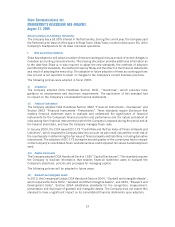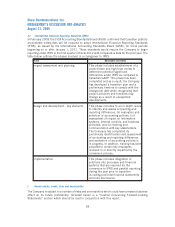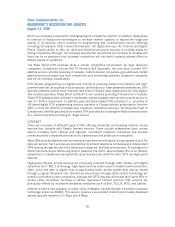Shaw 2009 Annual Report Download - page 24
Download and view the complete annual report
Please find page 24 of the 2009 Shaw annual report below. You can navigate through the pages in the report by either clicking on the pages listed below, or by using the keyword search tool below to find specific information within the annual report.G. Critical accounting policies and estimates
The Company prepared its Consolidated Financial Statements in accordance with Canadian GAAP.
An understanding of the Company’s accounting policies is necessary for a complete analysis of
results, financial position, liquidity and trends. Refer to Note 1 to the Consolidated Financial
Statements for additional information on accounting policies. The following section discusses key
estimates and assumptions that management has made under GAAP and how they affect the
amounts reported in the Consolidated Financial Statements and notes. It also describes significant
accounting policies where alternatives exist. In addition, within the critical accounting policies and
estimates, Canadian-US GAAP differences are identified where they exist. Refer to Note 22 to the
Consolidated Financial Statements for a complete reconciliation of Canadian-US GAAP
differences. Following is a discussion of the Company’s critical accounting policies:
i) Revenue and expense recognition
Revenue is considered earned as services are performed, provided that at the time of performance,
ultimate collection is reasonably assured. Such performance is regarded as having been achieved
when reasonable assurance exists regarding the measurement of the consideration that will be
derived from rendering the service. Revenue from cable, Internet, Digital Phone and DTH customers
includes subscriber service revenue when earned. The revenue is considered earned as the period of
service relating to the customer billing elapses.
The Company has multiple deliverable arrangements comprised of upfront fees (subscriber
connection fee revenue and/or customer premise equipment revenue) and related subscription
revenue. The Company determined that the upfront fees charged to customers do not constitute
separate units of accounting; therefore, these revenue streams are assessed as an integrated
package.
Subscriber connection fee revenue
Connection fees have no stand alone value to the customer separate and independent of the
Company providing additional subscription services, therefore the connection fee revenue must be
deferred and recognized systematically over the periods that the subscription services are earned.
There is no specified term for which the customer will receive the related subscription service,
therefore the Company has considered its customer churn rate and other factors, such as
competition from new entrants, to determine the deferral period of two years.
In conjunction with connection fee revenue, the Company also incurs incremental direct costs
which include certain customer acquisition costs such as selling, administrative and reconnection
costs. There are two alternatives to account for these incremental direct costs. The first alternative
is to expense the costs immediately. The second alternative, as permitted by primary sources of
GAAP, is to defer and amortize incremental costs directly related to the upfront revenue. Emerging
Issues Committee (“EIC”) abstract 141, “Revenue Recognition” states that the costs incurred
related to the acquisition or origination of a customer contract should be accounted for on a basis
similar to the three criteria set forth in EIC-27, “Revenues and Expenditures during the Pre-
operating Period.” The Company has determined that the aforementioned incremental costs
identified above meet the criteria for deferral.
The Company has limited its deferral of certain customer acquisition costs to the amount of related
deferred connection fee revenue due to the non-tangible nature of these costs. Under US GAAP,
subscriber connection fees are recognized as revenue when the connection is completed as it is
considered a partial recovery of initial selling expenses and related administrative expenses.
20
Shaw Communications Inc.
MANAGEMENT’S DISCUSSION AND ANALYSIS
August 31, 2009



